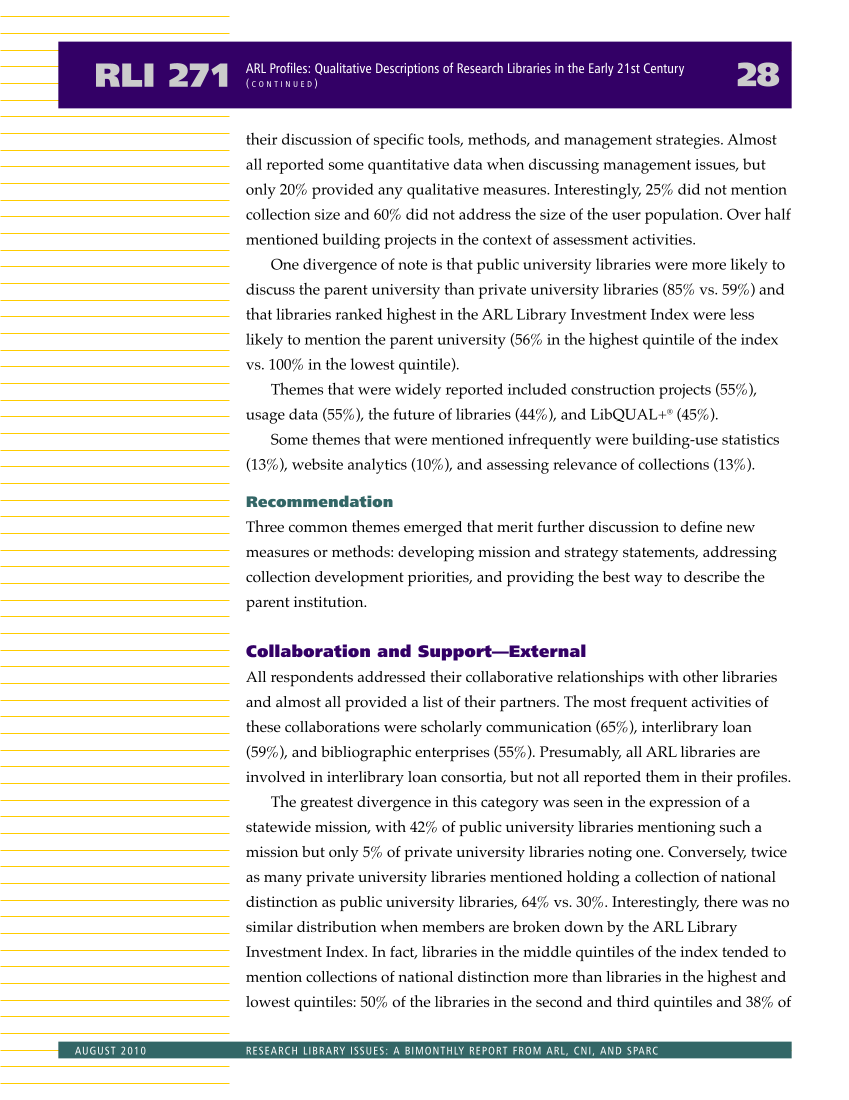their discussion of specific tools, methods, and management strategies. Almost all reported some quantitative data when discussing management issues, but only 20% provided any qualitative measures. Interestingly, 25% did not mention collection size and 60% did not address the size of the user population. Over half mentioned building projects in the context of assessment activities. One divergence of note is that public university libraries were more likely to discuss the parent university than private university libraries (85% vs. 59%) and that libraries ranked highest in the ARL Library Investment Index were less likely to mention the parent university (56% in the highest quintile of the index vs. 100% in the lowest quintile). Themes that were widely reported included construction projects (55%), usage data (55%), the future of libraries (44%), and LibQUAL+® (45%). Some themes that were mentioned infrequently were building-use statistics (13%), website analytics (10%), and assessing relevance of collections (13%). Recommendation Three common themes emerged that merit further discussion to define new measures or methods: developing mission and strategy statements, addressing collection development priorities, and providing the best way to describe the parent institution. Collaboration and Support—External All respondents addressed their collaborative relationships with other libraries and almost all provided a list of their partners. The most frequent activities of these collaborations were scholarly communication (65%), interlibrary loan (59%), and bibliographic enterprises (55%). Presumably, all ARL libraries are involved in interlibrary loan consortia, but not all reported them in their profiles. The greatest divergence in this category was seen in the expression of a statewide mission, with 42% of public university libraries mentioning such a mission but only 5% of private university libraries noting one. Conversely, twice as many private university libraries mentioned holding a collection of national distinction as public university libraries, 64% vs. 30%. Interestingly, there was no similar distribution when members are broken down by the ARL Library Investment Index. In fact, libraries in the middle quintiles of the index tended to mention collections of national distinction more than libraries in the highest and lowest quintiles: 50% of the libraries in the second and third quintiles and 38% of RLI 271 28 ARL Profiles: Qualitative Descriptions of Research Libraries in the Early 21st Century ( C O N T I N U E D ) AUGUST 2010 RESEARCH LIBRARY ISSUES: A BIMONTHLY REPORT FROM ARL, CNI, AND SPARC



















































